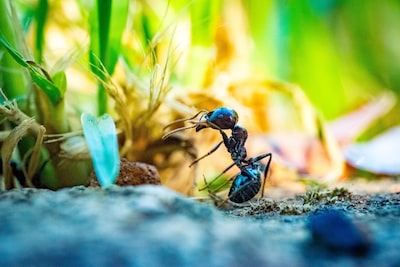Look Out for These Signs of Damage
Don't Let Carpenter Ants Destroy Your Home: Look Out for These Signs of Damage

Carpenter ants, those persistent insects, can become a homeowner’s worst nightmare. Their destructive habits have the potential to wreak havoc and cause extensive harm to your beloved home’s very structure, leaving it vulnerable and weakened. As a vigilant homeowner, it is crucial to become familiar with the unmistakable signs that point to the presence of carpenter ant damage. By actively recognizing and promptly addressing these signs, you stand a better chance of mitigating the disastrous consequences of these relentless pests. Therefore, in this informative blog post, our objective is to provide you with a comprehensive understanding of the various indicators of carpenter ant damage, along with valuable insights and practical advice on how to both prevent such infestations and effectively manage them should they occur.
.
Signs of Carpenter Ant Damage
Visible Wood Shavings
- One of the most obvious signs of carpenter ant damage is the presence of wood shavings or sawdust near wooden structures in your home.
- These shavings are a result of the ants excavating galleries and tunnels in the wood.
Hollow-Sounding Wood
- If you tap on a wooden structure and it sounds hollow, it could be a sign of carpenter ant damage.
- The ants hollow out the wood as they create their nests, leaving behind weakened and compromised structures.
Frass
- Carpenter ants produce a substance called frass, which is a mixture of wood particles and ant waste.
- If you notice small piles of frass near wooden structures, it could indicate a carpenter ant infestation.
Prevention and Treatment
Remove Moisture Sources
- Carpenter ants are attracted to moisture, so it’s important to eliminate any water sources in and around your home.
- Fix leaky pipes, repair damaged gutters, and ensure proper drainage to prevent moisture buildup.
Seal Entry Points
- Inspect your home for any cracks or gaps that could serve as entry points for carpenter ants.
- Seal these openings with caulk or another appropriate sealant to prevent ants from entering your home.
Trim Trees and Shrubs
- Carpenter ants often nest in trees and shrubs before making their way into your home.
- Regularly trim branches and shrubs that are in close proximity to your house to reduce the risk of infestation.
Conclusion
By being aware of the signs of carpenter ant damage and taking preventative measures, you can protect your home from these destructive pests. If you suspect a carpenter ant infestation, it’s important to contact a professional pest control company to assess the situation and provide appropriate treatment. Don’t let carpenter ants destroy your home – stay vigilant and take action to keep them at bay.